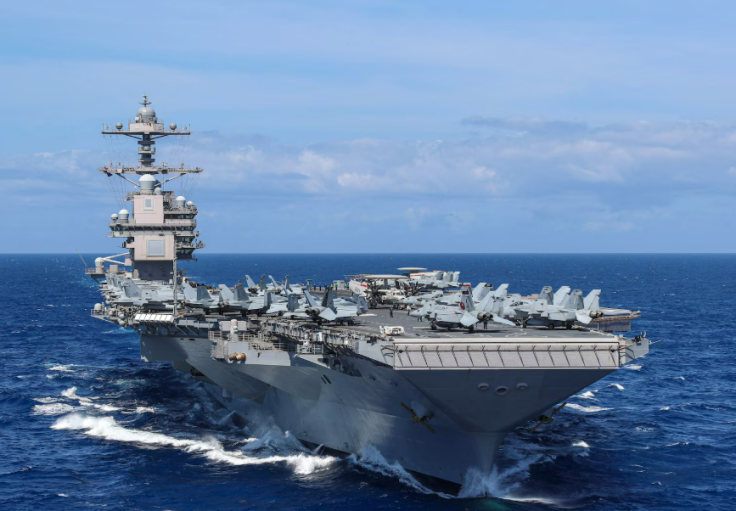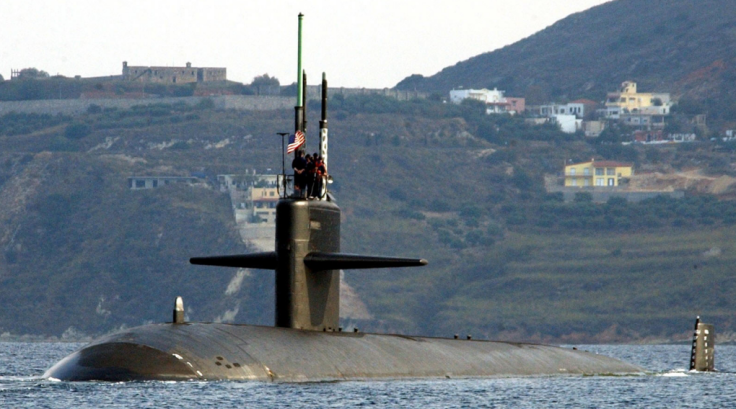
Over recent weeks, the United States has built up a significant military presence in and around the Caribbean Sea as part of President Donald Trump's counter-narcotics campaign in South America.
Former high-ranking Venezuelan officials have said the firepower now assembled in the region is so strong that any potential armed conflict would result in an overwhelming U.S. victory within hours.
From the world's largest aircraft carrier to support troops waiting in Puerto Rico, the U.S. has assembled a force not seen in the Caribbean this century.
According to the Miami Herald, the buildup mirrors Operation Just Cause, the 1989 invasion of Panama that led to the ouster of dictator Manuel Noriega. Although thousands of troops have been deployed under the banner of counter-narcotics enforcement, sources familiar with the operation told the outlet the larger goal is to end the regime of Venezuelan President Nicolás Maduro.
Roughly 10,000 soldiers and military personnel are now positioned in Caribbean waters. The Herald provided an overview of the military assets currently stationed near South America.
Sailors and Marines with the USS Iwo Jima Amphibious Ready Group and @22nd_MEU in the Caribbean Sea are demonstrating the superiority of our Navy-Marine Corps team across the land, sea and air domains.
— U.S. Southern Command (@Southcom) October 29, 2025
U.S. military forces are deployed to the Caribbean in support of the… pic.twitter.com/YjtjPuU17M
The centerpiece of the fleet is the USS Gerald R. Ford, the Navy's largest and most advanced aircraft carrier. On Oct. 24, Pentagon spokesperson Sean Parnell said Defense Secretary Pete Hegseth ordered the carrier to the U.S. Southern Command area of responsibility, which includes South and Central America and the Caribbean south of Cuba, to help "dismantle transnational criminal organizations and counter narco-terrorism in defense of the homeland."
The Herald reported that the Ford's air wing includes nearly 90 aircraft, among them F/A-18 Super Hornets, the Navy's main fighter jets used for air combat and strike missions, and E-2D Hawkeyes, early-warning aircraft equipped with radar systems to track enemy targets and coordinate operations.
The carrier is escorted by several Arleigh Burke-class destroyers, fast and heavily armed warships capable of missile defense and anti-submarine warfare, and by the USS Normandy (CG-60), a Ticonderoga-class guided-missile cruiser designed to provide air defense and command support for carrier strike groups.
In addition, two attack submarines are reportedly operating near Venezuela. One is the USS Newport News (SSN-750), a Los Angeles-class nuclear-powered attack submarine built for stealth, speed and long-range operations. It can launch torpedoes and Tomahawk cruise missiles, gather intelligence, and track enemy submarines and ships while remaining undetected.

The other vessel is believed to be a Virginia-class submarine, a fast-attack model capable of carrying cruise missiles for precision strikes.
The U.S. presence also includes two Littoral Combat Ships, fast and maneuverable vessels designed to operate in coastal waters. They can carry out missions such as mine countermeasures, anti-submarine warfare and surface combat.
As the buildup continues, two replenishment ships stationed near Puerto Rico are standing by to provide fuel and supplies for extended operations. The Herald also reported the presence of auxiliary support vessels, including a submarine survey ship believed to assist in intelligence and covert operations.
© 2025 Latin Times. All rights reserved. Do not reproduce without permission.







